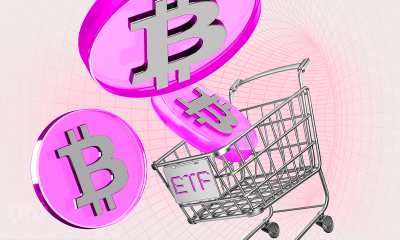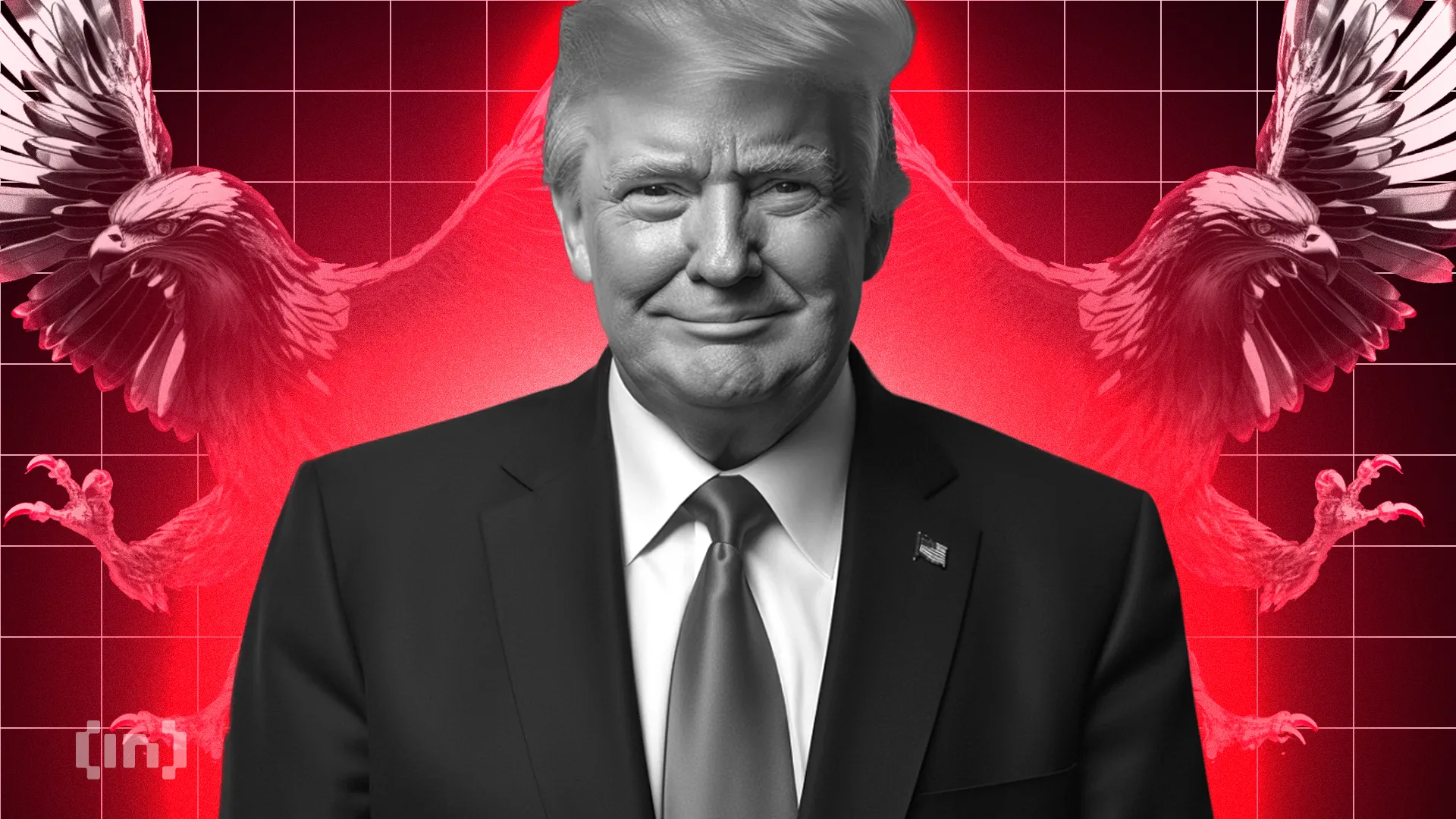Market
Why Telegram’s Tap-to-Earn Segment Is Winning Investors


The rapid rise of tap-to-earn games on Telegram, powered by The Open Network (TON) blockchain, has attracted significant attention — and funding — from venture capitalists. Investors are making substantial bets on Telegram’s tap-to-earn games like Notcoin, Hamster Kombat, and Catizen, seeing them as the future of Web3 gaming.
But what exactly is driving these investment decisions, and how do investors envision the future of tap-to-earn? BeInCrypto recently interviewed Animoca Brands, one of the biggest TON validators, and Hashkey Capital, which has made significant investments and formed partnerships with Catizen.
Investors Eye Social Experiences as the Future of Tap-to-Earn Games
Undeniably, one of the key reasons venture capitalists are drawn to Telegram’s tap-to-earn ecosystem is its vast and engaged user base. With 950 million active users as of July 2024, the platform offers an unparalleled audience for developers looking to launch and scale games. This kind of organic reach dramatically reduces user acquisition costs, which is a major selling point for investors.
Furthermore, its crypto-native infrastructure sets Telegram apart from other platforms in the Web3 gaming space. The integration of TON blockchain allows for seamless transactions, reducing friction between the gaming experience and the user’s wallet. This ease of use is a significant draw for both developers and investors, as it allows instant monetization without the hurdles typically associated with blockchain adoption.
“Telegram is one of the few platforms where Web3 mechanics are baked into the experience. The ability to move from gameplay to crypto transactions without leaving the app is a huge competitive edge,” Junbo Yang, Investment Manager at Hashkey Capital, explains.
For investors, this integrated experience makes Telegram a prime candidate for further investment. The platform’s low transaction fees, scalability, and growing list of mini-apps ensure that developers can continue to innovate and retain users without the technical barriers that often plague Web3 adoption.
As TON ecosystem and tap-to-earn games grow, investors remain optimistic about the future of this segment. For instance, Hamster Kombat alone has attracted over 300 million users across 190 countries, with its upcoming HMSTR airdrop poised to be one of the largest in the crypto space.
Read more: What Is Hamster Kombat?
Meanwhile, Catizen has successfully built a loyal user base while optimizing its monetization strategy. Likewise, Notcoin attracted over 40 million global users and executed one of the year’s largest airdrops, solidifying its position as a key player in TON ecosystem.
Both Hashkey Capital and Animoca Brands see the success of these games as just the beginning. They believe as developers improve game mechanics, they will also discover new ways to retain users, moving beyond simple rewards to social and immersive experiences.
Why Telegram Could Drive the Next Web3 Boom?
Furthermore, the investors view these games as a proof of concept, demonstrating the scalability of the tap-to-earn model and its ability to retain users beyond initial incentives. This success reveals significant potential for growth and expansion within the tap-to-earn sphere.
In a recent exclusive interview with BeInCrypto, Yat Siu, the co-founder and executive chairman of Animoca Brands, strongly advocated integrating blockchain gaming into Telegram. He sees that the built-in audience allows games to scale quickly without costly marketing campaigns—a crucial factor for venture capitalists eyeing high returns.
“The next 100 to 200 million users in Web3 will come from Telegram and its gaming ecosystem,” Siu remarks.
Investors are primarily focused on three factors: user acquisition, scalability, and retention. However, they are also particularly excited about the potential for long-term monetization. Catizen, for example, stands out for its ability to retain users and optimize their lifetime value (LTV), showcasing sustainable growth and a profitable tap-to-earn model.
Junbo Yang highlights how Catizen and similar games set the stage for future development by prioritizing monetization and long-term user engagement.
“The early success of Catizen in monetizing its user base offers a blueprint for how other developers can scale their games,” Yang notes.
These investors’ perspectives align with the game teams’ long-term visions. In an email to BeInCrypto, the Hamster Kombat team revealed their plan to evolve into a multi-game platform.
“After the first airdrop, we will launch the second season with a massive expansion, allowing players to choose from multiple games to play. This begins the transformation of Hamster Kombat from a game into a gaming platform, similar to how Valve moved on from launching cult-status games to Steam, the largest game marketplace for PCs,” they elaborated.
Turning Setbacks into Growth: Why Investors Remain Optimistic Despite TON’s Hiccups
While the tap-to-earn model has proven its ability to attract users, the key challenge is keeping them engaged beyond initial airdrops and rewards. Some critics have raised concerns about mercenary users—those who join games solely to earn tokens—but investors see this as a short-term challenge.
However, investors believe that as developers increasingly adopt the tap-to-earn model, they will also find ways to extend user lifecycles, enhancing its sustainability. Yat Siu believes that the tap-to-earn model, while currently reward-driven, is laying the foundation for a much larger gaming ecosystem.
“Tap-to-earn is just the beginning. Once users enter the ecosystem, the goal is to build community and social experiences that keep them engaged for reasons beyond just token rewards,” Siu argues.
In addition to the sustainability concerns, the Telegram ecosystem has faced recent challenges. For instance, earlier in August, BeInCrypto reported that TON blockchain experienced an outage, temporarily halting block production for several hours. This incident raised concerns about the network’s ability to handle future surges in activity, especially with the increasing number of users participating in tap-to-earn games.
Addressing the issue, Yat Siu acknowledged the outage but remained confident in TON’s resilience. Siu emphasized that TON is still in its early stages and believes that such challenges are part of the network’s growth process. He sees TON’s potential to become even larger than Telegram itself in the future, driving the platform’s growth.
“TON itself should remain as a censorship-resistant decentralized platform like other chains, but the projects and dApps themselves can implement measures to ensure stability,” he said.
Read more: Top 7 Telegram Tap-to-Earn Games to Play in 2024
Regardless of these challenges, venture capitalists remain confident in the potential of tap-to-earn. The coming years will reveal whether this model will secure its place as a lasting feature in Web3 gaming, but for now, investors are fully committed.
Disclaimer
Following the Trust Project guidelines, this feature article presents opinions and perspectives from industry experts or individuals. BeInCrypto is dedicated to transparent reporting, but the views expressed in this article do not necessarily reflect those of BeInCrypto or its staff. Readers should verify information independently and consult with a professional before making decisions based on this content. Please note that our Terms and Conditions, Privacy Policy, and Disclaimers have been updated.
Market
Report Alleges Massive Meme Coin Sniping on Pump.fun

According to a new report from Pine Analytics, token deployers on Pump.fun systematically funded sniper wallets to buy their own meme coins. This impacted over 15,000 token launches on the platform.
These sniper wallets operated primarily during US trading hours, executing standardized, profitable strategies. Unrelated bot activity obscures their behavior, making it extremely difficult to isolate these wallets—and they can readily adapt to new countermeasures.
Snipers Roam Free on Pump.fun Meme Coins
Pump.fun has remained one of the most popular meme coin launchpads on Solana despite persistent controversies and other criticism.
However, Pine Analytics’ new report has uncovered a new controversy, discovering systematic market manipulation on the platform. These snipes include as much as 1.75% of all launch activity on Pump.fun.
“Our analysis reveals that this tactic is not rare or fringe — over the past month alone, more than 15,000 SOL in realized profit was extracted through this method, across 15,000+ launches involving 4,600+ sniper wallets and 10,400+ deployers. These wallets demonstrate unusually high success rates (87% of snipes were profitable), clean exits, and structured operational patterns,” it claimed.
Solana meme coin deployers on Pump.fun follow a consistent pattern. They fund one or more sniper wallets and grant them advance notice of upcoming token launches.
Those wallets purchase tokens in the very first block and then liquidate almost immediately—85% within five minutes and 90% in just one or two swap events.

Pump.fun meme coin developers exploit this tactic to create the appearance of immediate demand for their tokens. Retail investors, unaware of the prior sell‑off, often purchase these tokens after the snipe, giving developers an unfair advantage. This constitutes market manipulation and erodes trust in the platform.
Pine Analytics had to carefully calibrate its methods to identify genuine snipers. Apparently, 50% of meme coin launches on Pump.fun involve sniping, but most of this is probably bots using the “spray and pray” method.
However, by filtering out snipers with no direct links to developer wallets, the firm missed projects that covered their tracks through proxies and burners.
In other words, the meme coin community does not have adequate defenses against systematic abuse on Pump.fun. There are a few possible ways that the platform could flag repeat offenders and sketchy projects, but adaptive countermeasures could defeat them. This problem demands persistent and proactive action.
Unfortunately, it may be difficult to enact such policies. Meme coin sniping is so systematic that Pump.fun could only fight it with real commitment.
Analysts think that building an on-chain culture that rewards transparency over extraction is the best long-term solution. A shift like that would be truly seismic, and the meme coin sector might not survive it.
Disclaimer
In adherence to the Trust Project guidelines, BeInCrypto is committed to unbiased, transparent reporting. This news article aims to provide accurate, timely information. However, readers are advised to verify facts independently and consult with a professional before making any decisions based on this content. Please note that our Terms and Conditions, Privacy Policy, and Disclaimers have been updated.
Market
Solana Leads Blockchain Metrics as SOL Momentum Builds

Solana (SOL) continues to show strength across multiple fronts, maintaining a bullish structure on its Ichimoku Cloud chart while gaining momentum in key market metrics. The BBTrend indicator has turned higher again, signaling renewed buying pressure after a brief cooldown.
On-chain activity remains strong, with Solana leading all blockchains in DEX volume and dominating fee generation thanks to the explosive growth of meme coins and launchpad activity. With SOL now trading above a key resistance level, the path is open for further upside—though a loss of momentum could still trigger a retest of lower supports.
Solana Maintains Bullish Structure, but Momentum Faces Key Test
On Solana’s Ichimoku Cloud chart, the price is currently above the Kijun-sen (red base line) but has dipped below the Tenkan-sen (blue conversion line), signaling weakening short-term momentum.
The flattening Tenkan-sen and price behavior suggest possible consolidation or the early stages of a pullback. Still, with the price holding above the Kijun-sen, medium-term support remains intact.

The overall Ichimoku structure remains bullish, with a thick, rising cloud and leading span A well above span B—indicating strong underlying support.
If Solana finds support at the Kijun-sen and climbs back above the Tenkan-sen, the uptrend could regain strength; otherwise, a test of the cloud’s upper boundary may follow.

Meanwhile, Solana’s BBTrend is currently at 6, extending nearly ten days in positive territory after peaking at 17.5 on April 14. The recent increase from 4.26 to 6 suggests renewed bullish momentum following a brief cooldown.
BBTrend, or Bollinger Band Trend, tracks the strength of price movement based on Bollinger Band expansion.
Positive values like the current one point to an active uptrend, and if the BBTrend continues to rise, it could signal stronger momentum and potential for another upward move.
Solana Dominates DEX Volume and Fee Generation as Meme Coins Drive Ecosystem Growth
Solana has once again claimed the top spot among all chains in DEX volume, recording $15.15 billion over the past seven days. The combined total of Ethereum, BNB, Base, and Arbitrum reached $22.7 billion.

In the last 24 hours alone, Solana saw $1.67 billion in volume, largely fueled by its booming meme coin ecosystem and the ongoing launchpad battle between PumpFun and Raydium. Adding to this good momentum, Solana recently surpassed Ethereum in Staking Market Cap.

When it comes to application fees, Solana’s momentum is just as clear. Four of the top ten fee-generating apps over the past week—PumpFun, Jupiter, Jito, and Meteora—are Solana-focused.
Pump leads the pack with nearly $18 million in fees alone.
Solana Breaks Key Resistance as Uptrend Targets Higher Levels, but Risks Remain
Solana has finally broken above its key resistance at $136, flipping it into a new support level that was successfully tested just yesterday.
Its EMA lines remain aligned in a bullish setup, suggesting the uptrend is still intact.
If this momentum continues, SOL price could aim for the next resistance zones at $147 and $152—levels that, if breached, open the door to a potential move toward $179.

The current structure favors buyers, with higher lows and strong support reinforcing the trend.
However, if momentum fades, a retest of the $136 support is likely.
A breakdown below that level could shift sentiment, exposing Solana to deeper pullbacks toward $124 and even $112.
Disclaimer
In line with the Trust Project guidelines, this price analysis article is for informational purposes only and should not be considered financial or investment advice. BeInCrypto is committed to accurate, unbiased reporting, but market conditions are subject to change without notice. Always conduct your own research and consult with a professional before making any financial decisions. Please note that our Terms and Conditions, Privacy Policy, and Disclaimers have been updated.
Market
Crypto Firms Donated $85 million in Trump’s Inauguration

According to a new report, 15 firms and individuals from the crypto industry donated more than $100,000 to President Trump’s Inauguration, totaling over $85 million.
Almost all of these companies apparently received direct or indirect benefits from Trump’s administration. This includes dropped legal proceedings, lucrative business partnerships, participation in Trump’s Crypto Summit, and more.
Crypto Industry Went All-In on Trump’s Inauguration
Since promising to bring friendlier regulations on the campaign trail, Donald Trump attracted a reputation as the Crypto President.
Trump’s Inauguration festivities included a “Crypto Ball,” and several prominent firms made donations for these events. Today, a report has compiled all crypto-related contributions of over $100,000, revealing some interesting facts.

Since taking office, President Trump and his family have been allegedly involved in prominent crypto controversies, and these donations may be linked to several of them.
For example, eight of the donors, Coinbase, Crypto.com, Uniswap, Yuga Labs, Kraken, Ripple, Robinhood, and Consensys, had SEC investigations or lawsuits against them closed since Trump’s term began.
The commission might have dropped its probe against these companies anyway due to its changing stance on crypto enforcement. However, being in the President’s good books likely helped the process.
Further Alleged Benefits for Donors
In other words, nearly half the firms that made donations to Trump’s Inauguration have seen their legal problems cleared up quickly. This isn’t the only regulation-related benefit they allegedly received.
Circle, for example, recently made an IPO after openly stating that Trump’s Presidency made it possible. Galaxy Digital received SEC approval for a major reorganization, a key step for a NASDAQ listing.
Other donors, such as Crypto.com and ONDO, got more direct financial partnerships with businesses associated with the Trump family.
Previously, Ripple’s CEO, Brad Garlinghouse, anticipated a crypto bull market under Trump. Also, XRP, Solana, and Cardano were all unexpectedly included in the US Crypto Reserve announcement.
All three of these companies made major donations to Trump’s Inauguration.
It seems that most of the firms involved got at least some sort of noticeable benefit from these donations. Donors like Multicoin and Paradigm received invitations to Trump’s Crypto Summit, while much more prominent groups like the Ethereum Foundation got snubbed.
Meanwhile, various industry KOLs and community members have already alleged major corruption in Trump’s crypto connections.
While some allegations might lack substantial proof, the crypto space has changed dramatically under the new administration, for both good and bad.
Disclaimer
In adherence to the Trust Project guidelines, BeInCrypto is committed to unbiased, transparent reporting. This news article aims to provide accurate, timely information. However, readers are advised to verify facts independently and consult with a professional before making any decisions based on this content. Please note that our Terms and Conditions, Privacy Policy, and Disclaimers have been updated.
-

 Altcoin23 hours ago
Altcoin23 hours agoArk Invest Gains First Exposure to Solana With 3iQ ETF Bet
-

 Market23 hours ago
Market23 hours agoBitcoin ETFs Dominate Market Despite 72 Altcoin Proposals
-

 Market22 hours ago
Market22 hours agoCardano (ADA) Jumps 4% as Bullish Signals Emerge
-

 Altcoin22 hours ago
Altcoin22 hours agoPumpFun Moves $13M SOL To Kraken as Solana Price Consolidates, What Next?
-

 Ethereum21 hours ago
Ethereum21 hours agoEthereum to Emphasize Layer-1 Efficiency and UX in Upcoming Protocol Upgrades
-

 Market21 hours ago
Market21 hours agoXRP Surpasses Ethereum In This Major Metric After Outperforming For 6 Months
-

 Market20 hours ago
Market20 hours agoCrypto Firms Donated $85 million in Trump’s Inauguration
-

 Market19 hours ago
Market19 hours agoSolana Leads Blockchain Metrics as SOL Momentum Builds

















